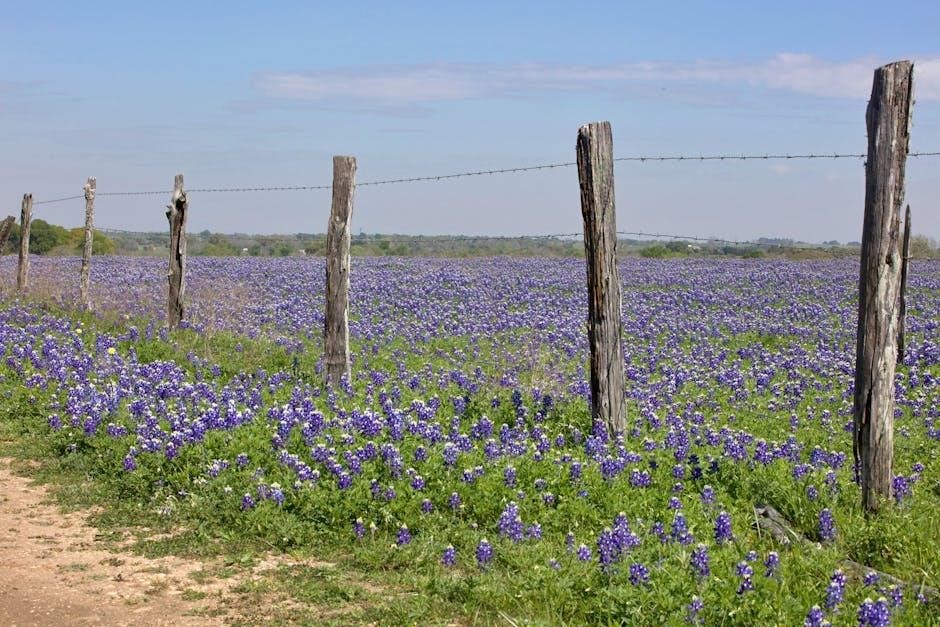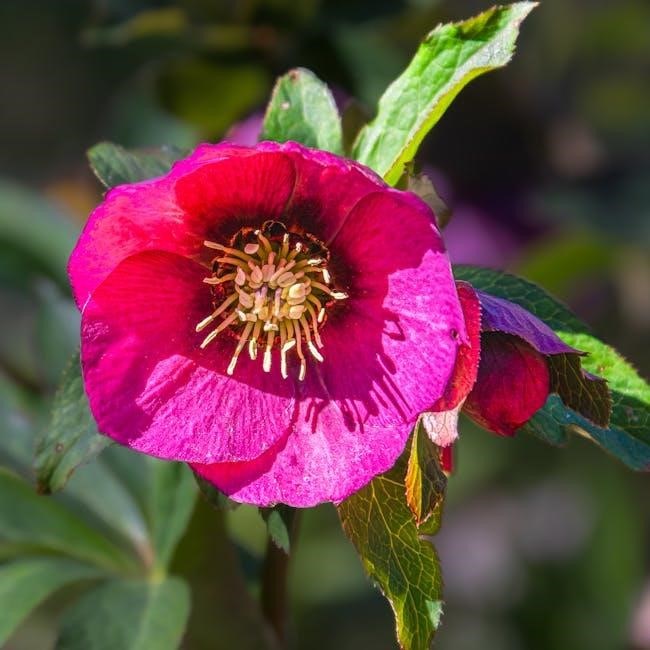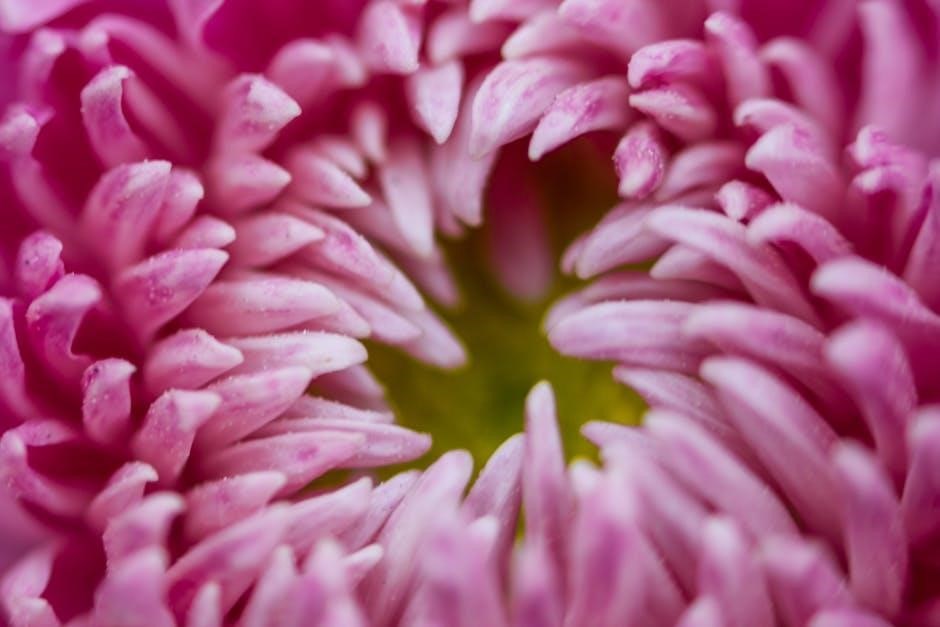Central Texas offers unique gardening opportunities with its USDA Hardiness Zones and seasonal planting windows. This guide helps gardeners navigate the region’s climate, soil types, and challenges to grow thriving plants year-round.
1.1 Overview of Central Texas Climate and Gardening Challenges
Central Texas has a semi-arid climate with hot, dry summers and mild winters. Gardening challenges include unpredictable rainfall, intense heat, and periodic droughts. Soil diversity ranges from clay to sandy loam, requiring tailored strategies. Extreme weather events, such as sudden frosts or thunderstorms, can impact plant growth. Understanding these factors is crucial for successful gardening in the region, where adapting to climate variability is key to thriving plant cultivation and maintaining soil health year-round.
1.2 Importance of Seasonal Planting in Central Texas
Seasonal planting is vital in Central Texas due to its extreme temperature fluctuations and limited rainfall. The region’s two main growing seasons—spring and fall—offer optimal conditions for plant growth. Planting in sync with these seasons ensures crops thrive, avoiding scorching summers and unexpected frosts. Understanding and adhering to seasonal rhythms maximizes yields, reduces pest susceptibility, and minimizes water usage, making it a cornerstone of successful gardening in this dynamic climate.

Understanding the USDA Plant Hardiness Zones for Central Texas
Central Texas falls under USDA Hardiness Zones 8a to 9b, with varying temperature ranges. These zones guide plant selection, ensuring species thrive in local climate conditions and frost patterns.
2.1 Zone-Specific Planting Recommendations
For Zone 8a, plant cool-season crops like spinach and lettuce in early spring and fall. In Zone 8b, extend the growing season with broccoli and cauliflower. Zone 9b supports warm-season plants year-round, such as tomatoes and peppers. Understanding these zones helps gardeners choose optimal planting times and suitable varieties, ensuring robust growth and productivity in Central Texas’s diverse climate conditions and varying frost dates.
Best Vegetables for Central Texas Gardens
Central Texas gardens thrive with leafy greens, tomatoes, peppers, cucumbers, and okra. These vegetables excel in the region’s climate, with leafy greens preferring cooler spring and fall seasons, while tomatoes and peppers flourish in warmer months. Their adaptability to local soil conditions makes them ideal for a productive and diverse garden.
3.1 Spring and Fall Vegetable Planting Calendar
Central Texas offers two prime growing seasons: spring and fall. Spring planting begins in late February to early March, with vegetables like tomatoes, peppers, and cucumbers thriving in warmer weather. Fall planting starts in late August to early September, ideal for leafy greens, broccoli, and carrots. These seasons avoid extreme summer heat and frost damage, ensuring optimal growth. Proper timing and variety selection are key to maximizing yields in both periods.
3.2 Recommended Varieties for Central Texas Soil
Central Texas soil often features alkaline conditions, making it essential to choose adaptable varieties. Leafy greens like kale and spinach thrive, as do root vegetables such as radishes and beets. Tomatoes, especially heat-tolerant and disease-resistant varieties, perform well. Peppers, both sweet and hot, are excellent choices. Herbs like basil and rosemary also succeed in the region. Selecting drought-tolerant and pest-resistant varieties ensures a bountiful harvest, even in challenging conditions.
Fruit and Berry Planting Guide
Figs, blackberries, blueberries, strawberries, and grapes thrive in Central Texas. Plant berries in early spring or late summer for optimal growth. Ensure adequate sunlight and water.
4.1 Seasonal Fruit Planting Tips
In Central Texas, plant fruits like figs, blackberries, and blueberries in early spring or late summer for optimal growth. Strawberries thrive in fall or early spring, while grapes prefer late winter. Ensure well-draining soil and full sun for most varieties. Water deeply but avoid overwatering. Mulch around plants to retain moisture and suppress weeds. Protect tender fruits from frost and extreme heat. Regular pruning and fertilization will enhance productivity and fruit quality.
Native and Adapted Plants for Central Texas
Native plants like Texas sage and coneflower thrive in Central Texas’s climate. Adapted species, such as drought-tolerant perennials, offer resilience and beauty, reducing maintenance needs.
5.1 Drought-Tolerant Plants and Wildflowers
Drought-tolerant plants like Lantana and Texas Sage are ideal for Central Texas gardens. Native wildflowers such as Bluebonnets and Indian Paintbrush thrive in dry conditions. These plants require minimal watering, adapt to local soil, and attract pollinators. Incorporating them ensures vibrant, low-maintenance landscapes that align with the region’s climate. They also support biodiversity and reduce water consumption, making them perfect for sustainable gardening practices in Central Texas.

Soil Preparation and Management
Understanding Central Texas’s diverse soil types is crucial for gardening success. Testing and amending soil with organic matter enhances fertility and supports plant growth effectively.
6.1 Understanding Central Texas Soil Types
Central Texas soils range from clay-rich Blackland Prairie soils to sandy loams in the Edwards Plateau. These soils vary in drainage, nutrient content, and water retention, affecting plant growth. Testing your soil type is essential to determine pH levels and nutrient deficiencies, ensuring proper amendments for optimal plant health and productivity in your garden.
6.2 Tips for Improving Soil Health
Enhancing soil health in Central Texas involves adding organic matter like compost or well-rotted manure to improve structure and fertility. Mulching helps retain moisture and suppress weeds, while crop rotation prevents nutrient depletion. Avoid over-tilling, as it disrupts soil structure and organic matter. Incorporating cover crops during off-seasons replenishes nutrients and enhances microbial activity, promoting a balanced ecosystem for robust plant growth and sustainable gardening practices.

Monthly Gardening Tasks for Central Texas
Central Texas gardeners should follow a monthly schedule for planting, pruning, and pest control to maximize yields and maintain landscape health throughout the year.
7.1 Spring Gardening Checklist
Spring is an ideal time for gardening in Central Texas. Start seeds indoors for warm-season crops like tomatoes and peppers. Directly plant cool-season vegetables such as broccoli, spinach, and carrots. Prune shrubs and fruit trees to promote healthy growth. Fertilize lawns and gardens with a balanced fertilizer. Mulch beds to retain moisture and suppress weeds. Monitor for pests like aphids and caterpillars. Water deeply but avoid overwatering. Divide and transplant perennials as needed. Check soil pH and adjust if necessary. Plan for upcoming heat by planting drought-tolerant species.
7.2 Fall Gardening Checklist
Fall gardening in Central Texas is ideal for planting cool-season crops like spinach, kale, and broccoli. Test soil pH and amend with compost or fertilizer as needed. Fertilize lawns and gardens with a balanced formula. Weed control is crucial to prevent competition for nutrients. Mulch beds to retain moisture and suppress weeds. Divide and transplant perennials for better growth. Water new plantings deeply but avoid overwatering. Monitor for pests like aphids and caterpillars. Clean up dead plants and debris to maintain garden health. Plant wildflower seeds for spring blooms.

Pest and Disease Management
Common pests in Central Texas gardens include aphids, caterpillars, and grubs. Regularly inspect plants, use organic pesticides like neem oil, and maintain cleanliness to prevent disease spread.
8.1 Common Pests in Central Texas Gardens
Central Texas gardens often face pests like aphids, whiteflies, and spider mites. These insects can damage plants by feeding on sap, causing curled or yellowed leaves. Grubs and caterpillars target vegetables and flowers, leading to defoliation. Regular monitoring, hand-picking, and organic pesticides like neem oil or insecticidal soap are effective control methods. Maintaining healthy plants and using row covers can also deter pests, ensuring a thriving garden.
Watering and Irrigation Tips
Efficient watering is crucial in Central Texas. Water deeply but infrequently to encourage deep root growth. Mulch retains moisture and reduces evaporation, while drip irrigation minimizes waste.
9.1 Efficient Water Use in Central Texas Gardens
Efficient water use in Central Texas gardens is essential due to hot summers and drought risks. Use drip irrigation and soaker hoses to minimize evaporation. Water deeply but infrequently to promote deep root growth. Mulch around plants to retain soil moisture and reduce runoff. Consider rainwater harvesting systems to supplement watering needs. Avoid overhead sprinklers, which waste water through evaporation and runoff. Early morning or evening watering reduces moisture loss. Smart irrigation controllers can optimize water usage based on weather conditions, ensuring plants receive adequate hydration without overwatering. Regular soil checks help prevent waterlogging and root rot. Incorporating drought-tolerant plants can further reduce water demands. Proper watering techniques not only conserve water but also foster healthy plant growth, making gardens more sustainable and resilient to Central Texas’s challenging climate conditions.
Local Resources for Gardeners
Central Texas gardeners benefit from resources like Texas A&M AgriLife Extension and the Lady Bird Johnson Wildflower Center, offering expert guidance, planting advice, and conservation tips;
10.1 Texas A&M AgriLife Extension Services
The Texas A&M AgriLife Extension provides expert guidance for Central Texas gardeners, offering planting calendars, soil health tips, and pest management strategies. Their resources include workshops, fact sheets, and online tools to help gardeners succeed; Visit their website for detailed gardening guides tailored to the region, ensuring a thriving and sustainable garden. This service is invaluable for both beginners and experienced growers in Central Texas.
10.2 Lady Bird Johnson Wildflower Center Guides
The Lady Bird Johnson Wildflower Center offers comprehensive guides for Central Texas gardeners, focusing on native plants and sustainable gardening practices. Their resources include plant lists, gardening tips, and regional guides tailored to the local climate. These guides emphasize drought-tolerant species, wildflowers, and eco-friendly practices, helping gardeners create beautiful, low-maintenance landscapes that support local biodiversity and thrive in Central Texas’s unique environment.
Gardening in Central Texas requires adapting to its unique climate and soil conditions. By following this guide, gardeners can enjoy thriving, sustainable gardens year-round with proper planning and care.
11.1 Final Tips for a Successful Central Texas Garden
Success in Central Texas gardening hinges on timing, soil preparation, and water management. Plant seasonally, choose varieties suited to local conditions, and conserve water. Regularly monitor soil health, control pests naturally, and utilize resources like the Texas A&M AgriLife Extension for guidance. By embracing these strategies, gardeners can overcome challenges and enjoy bountiful harvests and vibrant landscapes throughout the year.
